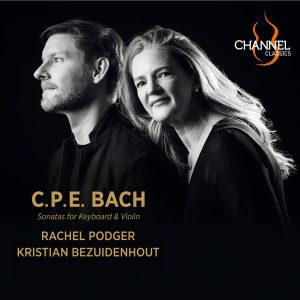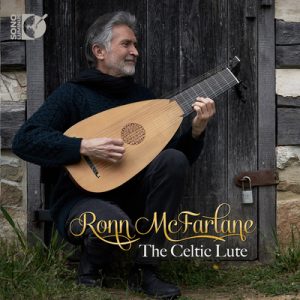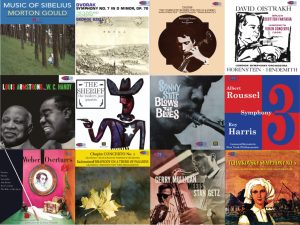Beware! Wildly broad generalizations coming below...
Interesting conversations get started over morning cappuccinos in our household. Today, the discussion was about files from the HDTT (High Definition Tape Transfer) catalog versus modern recordings from the NativeDSD catalog.
Ann opined that, overall, she found the NativeDSD files in our library were the files to which she gravitated for listening. So, I'm waiting for what is coming next because experience tells me that I'd better pay attention...
Sure enough, her explanation is very simple and very understandable. She says that, for her, the NativeDSD files sound more transparent, with higher resolution and detail. The HDTT files, she says, sound "old."
Oh, my...
As usual, she has a point.
The digital music files we have from HDTT and NativeDSD are all very high resolution: DXD and DSD256. But there IS an overall difference in the character of the best of the modern recordings from NativeDSD versus the best of the 1950s and 1960s recordings from HDTT.
The HDTT catalog contains many of the great recordings from the golden age of stereo. And while the equipment being used by Mercury, Decca, RCA, Blue Note, Verve, et al, to make those recordings was largely state of the art for the time, the equipment available to be used today is sonically superior in all the ways to which Ann referred: more transparent, lower noise floor, lower distortion, greater resolving capability, greater dynamic range.
When the equipment available today is put to use by the best of the recording engineers today (such as Jared Sacks, Gonzalo Noqué, Brendon Heinst, Bert van der Wolf, Morten Lindberg, Tom Peeters, Daniel Shores, Frans de Rond, etc.), we hear stunningly transparent results that simply exceed the capabilities available to the legendary recording engineers of the golden age.
And this is not a digital versus analog divide. It is an electronics divide, in my opinion. While the argument CAN be made that DSD256 recording technology is more resolving and transparent and with wider dynamic range than analog tape, this is NOT an argument I'm pursuing here. No, what I'm hearing has more to do with the electronics available in the '50s and '60s. Tubes are one factor. But incredibly transparent and resolving tube equipment is available today. And, while the circuits are largely of similar design (with some notable exceptions), the components used to build those circuits are today dramatically improved. They are remarkably, dramatically, more transparent, open, and resolving.
All of the best preamps, amplifiers, mixing boards, cables, power supplies, filters, in use today are simply more transparent than those of six decades ago—whether tube or solid state.
Accordingly, it is not surprising that the best of the current day recordings are more transparent, more open, more resolving, than the recordings of 60 years ago.
Consider the excellent Brahms Symphony No. 3 with Ivan Fischer released in 2021 by Jared Sacks (Channel Classics). Contrast it with the similarly excellent Symphony No. 3 with Fritz Reiner recorded by the great Lewis Layton and released by HDTT in a Pure DSD256 transfer from a 15ips 2-track tape. Both are demonstrably outstanding examples of the art of recording a symphony orchestra. And yet, and yet... As much as I LOVE the Reiner performance and recording, to Ann's point it does sound like a 1958 recording. It simply does not have the utter transparency of the modern 2020 recording.
Make the same comparison of the Reiner and Fischer recordings of Das Lied von der Erde (1959 vs. 2017). Both performances are in the top echelon of performance in the catalog. Both are supremely well engineered by Lewis Layton and Jared Sacks, respectively. I think you will find a similar qualitative difference in the sound character, particularly as you listen in the quieter passages to the inner detail of the orchestra sections.
This difference in sound character caused an audio friend of mine to completely eschew HDTT releases. He just could not get past his perception that they sounded "old." He'd far rather listen to the modern recordings. And, for me, that decision was utterly to his loss because he closed off so many wonderful performances from the golden age of stereo in his listening. I found it an ironic contrast to my situation in my "vinylholic" days of LPs-only listening.
So, in our household, does Ann listen to vintage recordings? Does she listen to Solti, Szell, Reiner, Munch, Ansermet, Cluytens, et al? Oh, you betcha she does—because she's a music lover. And there is GREAT music to be had here. With the superb transfers in DXD and DSD256 being released by HDTT from excellent source tapes, we are very happy in the musical banquet spread before us.
Side note: And, my goodness, I've been listening to the Brahms' Third as I'm typing this and realize I've been totally enthralled with the 1958 Reiner performance playing in my ears!
I said at the outset to beware of broad generalizations being made in this article. There are many exceptions on both sides.
In fact, I just finished writing a review of the HDTT release in Pure DSD256 of Art Blakey & The Jazz Messengers - Moanin' in which I wrote, "This Pure DSD256 transfer from a 15ips tape sounds open, dynamic, and very alive. If I didn't know this was a 1958 tape, I'd never have guessed it from the sound of this transfer. It could have been recorded last week." So, am I fabricating falsehoods in positing this difference of electronics and overall character of the sound? Hmmm, I don't think so. I think it is simply that there are exceptions to every generalization. Moanin' is one.
Another very clear exception is the 1956 recording by Westminster of Ars Nova performing Stravinsky's L'histoire du Soldat. As heard in this Pure DSD256 transfer from a Westminster 15ips 2-Track tape, there are not many modern recordings that can trump this one in terms of transparency, detail and ultimate resolution. This is truly a demonstration class recording even today:
HDTT Pure DSD256 transfer, download available HERE.
The HDTT catalog is filled with similar examples of truly transparent, highly resolving recordings.
And so is the NativeDSD catalog. (As is the Spirit of Turtle catalog.)
I write about exceptional recordings from all three catalogs regularly.
So, please take these ruminations just for what they've cost you to read them, and go listen for yourself! There is much wonderful music to hear. And beautiful, transparent, high resolution DXD and DSD256 sonics to enjoy.










































